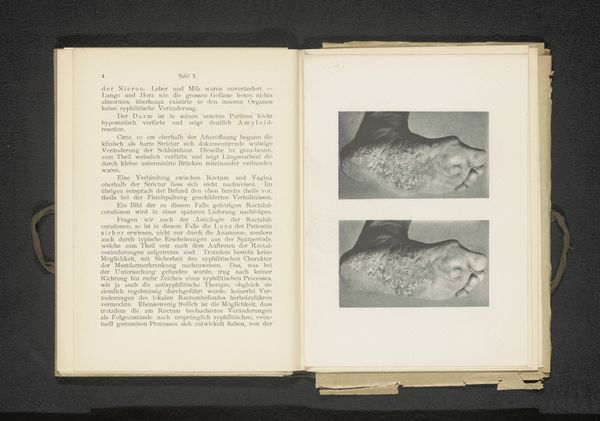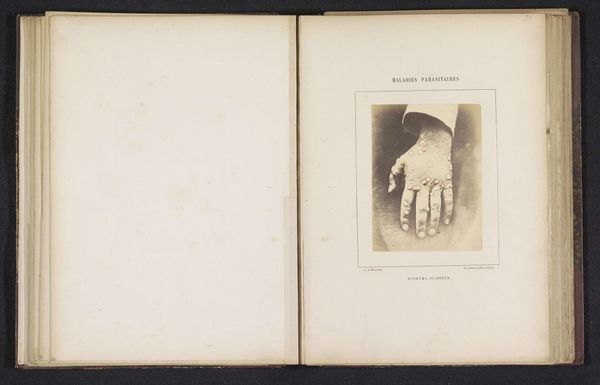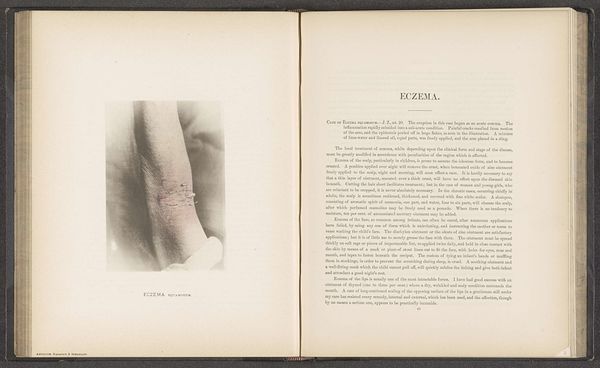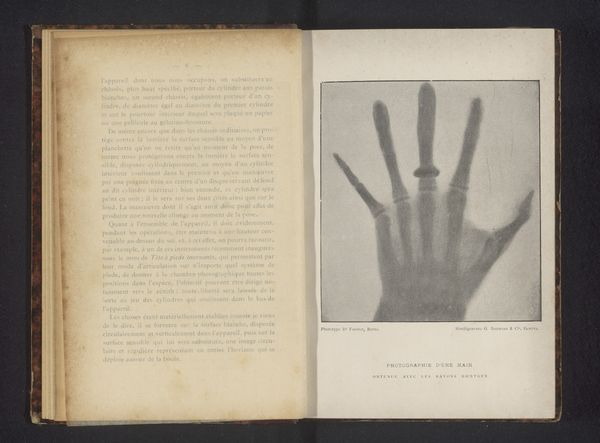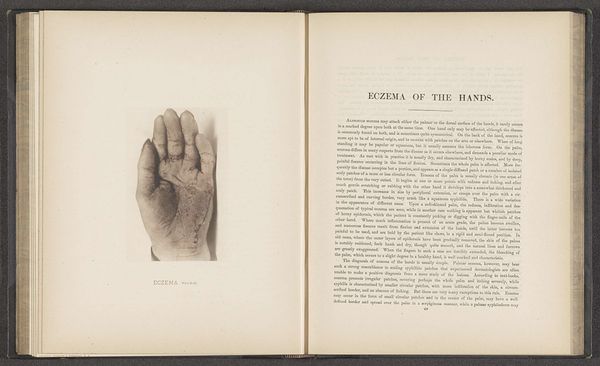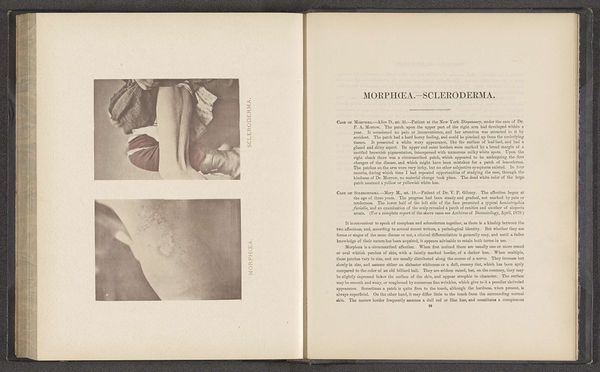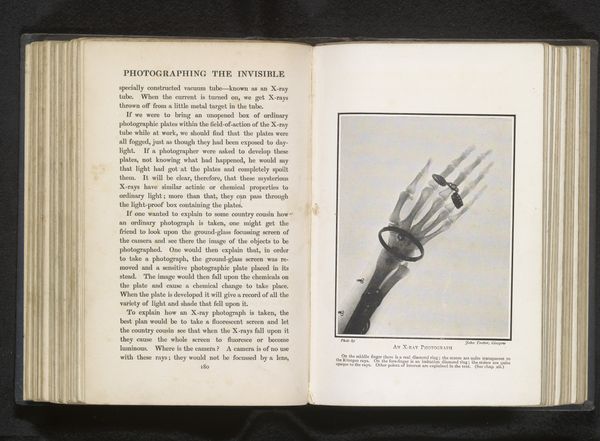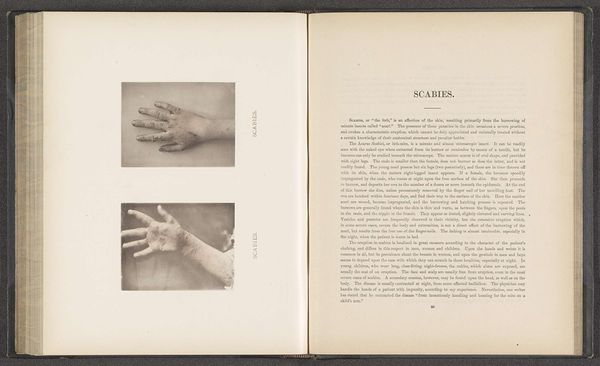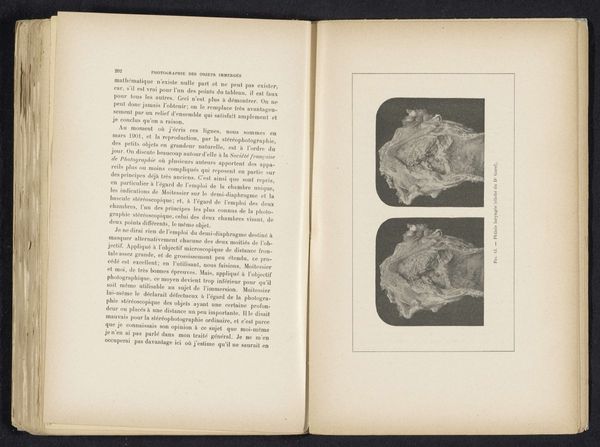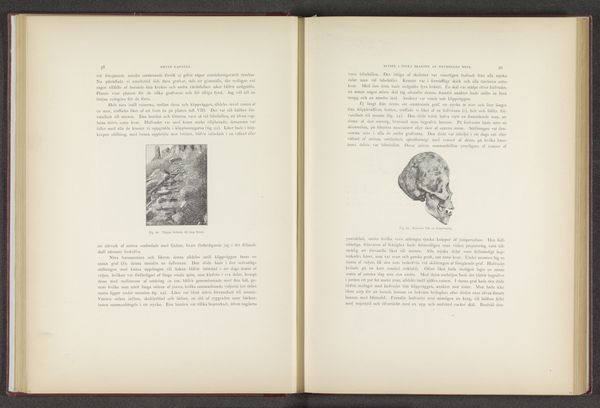
Patiënt lijdend aan de huidziekte 'erythema circinatum' en 'erythema exfoliativum' before 1881
0:00
0:00
print, photography, gelatin-silver-print
#
still-life-photography
# print
#
photography
#
gelatin-silver-print
#
realism
Dimensions: height 96 mm, width 72 mm, height 92 mm, width 72 mm, height 294 mm, width 226 mm
Copyright: Rijks Museum: Open Domain
Curator: Here we have a photograph, or rather a gelatin-silver print, of a patient suffering from erythema circinatum and exfoliativum. It dates from before 1881. Editor: It's haunting. The composition with the two hands isolates the textures of the skin. Almost lunar in its greyscale. Curator: What interests me is that this work challenges what we traditionally consider art. This wasn't created for aesthetic pleasure, but as a medical record. Look at the precision and detail captured through the photographic process. Editor: But doesn't that precision elevate it? The focus on capturing the texture of the skin transforms documentation into a tactile experience for the viewer. The light reveals more than just disease, there’s the underlying wear and tear of daily life embedded in each wrinkle. It forces you to think about labor. Curator: Absolutely. The materiality of the print itself becomes significant. A gelatin-silver print would have been chosen for its clarity and stability, a medium prioritizing accurate clinical study and reliable dissemination across the medical community. But what's particularly jarring is how accessible this was meant to be! Imagine the book circulating, these unsettling details passing from hand to hand… Editor: Yet even in its clinical coldness, there’s something inherently human, poetic even, in its rendering. I wonder what the patient felt. Curator: Indeed, that blend of objectivity and intimacy, a certain tension of looking, complicates our viewing experience, which goes beyond objective understanding and touches a more subjective, human sensitivity. Editor: It definitely reveals an intriguing link between the scientific, the artistic, and the deeply human, through a photographic document meant only for utility. Curator: Ultimately, considering the socio-historical context, seeing this almost forensic dedication to both detail and document forces one to reassess photography’s unique relationship with not only material, but mortality.
Comments
No comments
Be the first to comment and join the conversation on the ultimate creative platform.
